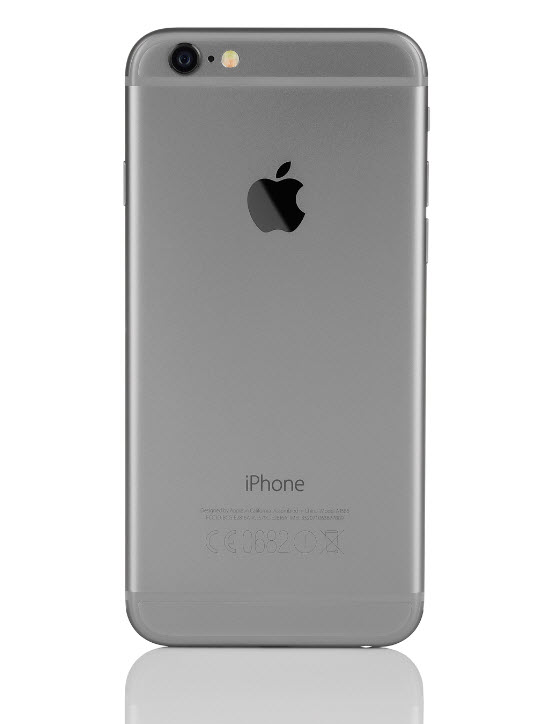Federal government shows strong support for Apple Pay
Apple Pay has gotten a major boost from the U.S. federal government. Apple has announced that its new mobile payments platform has received approval to accept payments for the federal government. The platform will begin accepting these payments in fall. The platform will be able to accept payments for those visiting federal locations, such as national parks, and will also be used for payment cards issued by the federal government.
Apple Pay’s latest victory may provide the service with the momentum it needs to break into new markets
The support from the federal government is a major victory for Apple Pay, which has come to establish a dominating presence in the mobile payments field. The platform is nearly four months old, having launched late last year, and has already managed to capture a significant portion of the mobile payments market. With the backing of the federal government, the platform is expected to continue gaining momentum, which will be needed to break into the payment markets of other countries.
Mobile payments continue to thrive in the United States
 Mobile payments has become quite popular among consumers in the United States. Many see paying with Apple Pay, and similar services, as a more convenient form of commerce. This is because many of these people already use their smartphones and other devices for many things in their daily lives. Mobile payment services have managed to gain strong support from consumers because of their convenient nature.
Mobile payments has become quite popular among consumers in the United States. Many see paying with Apple Pay, and similar services, as a more convenient form of commerce. This is because many of these people already use their smartphones and other devices for many things in their daily lives. Mobile payment services have managed to gain strong support from consumers because of their convenient nature.
Biometric technology helps keep Apple Pay secure
Apple Pay is not only convenient for consumers, of course, as it is also quite secure. The service makes use of biometric technology, which uses biological information, such as a finger print, to protect the financial information of its users. Such technology is becoming more important in the mobile payments field, as the market has become a prime target for malicious groups that would exploit the financial information of consumers. The security measures that Apple has incorporated into its payment platform has received praise from the U.S. government.
Two recent studies has shown that device users still aren’t ready to shop and pay with their gadgets.
Although smartphones are rapidly making their way into the hands of virtually every American, nowadays, mobile commerce and payments are falling way behind the many other uses that people have for their gadgets.
This, according to the results of two different surveys that looked into the use of mobile devices.
According to research from Informate Mobile Intelligence, the average American smartphone user currently spends about 4.7 hours on his or her device, every day. That represents about thirty percent of their waking time. That research was conducted in December 2014, and shoed that device users in the U.S. are greatly likely to have access to applications for mobile commerce and payments. The reach for shopping apps, at that time, was 59 percent, and for mobile payments apps, it was 49 percent.
That said, despite the reach, mobile commerce and payments aren’t appealing to American consumers as they could.
 A second survey, this one by Placeable, which involved the participation of one thousand consumers in the United States, said that while the mobile apps may be there, people simply aren’t using them. That survey determined that 42 percent of smartphone owners had never made a purchase on their device. Moreover, only 9 percent of those who had access to mobile payments said that they actually used them.
A second survey, this one by Placeable, which involved the participation of one thousand consumers in the United States, said that while the mobile apps may be there, people simply aren’t using them. That survey determined that 42 percent of smartphone owners had never made a purchase on their device. Moreover, only 9 percent of those who had access to mobile payments said that they actually used them.
The survey pointed out that this also doesn’t necessarily mean that shoppers aren’t using their mobile devices as a part of their purchasing process. The research indicated that 6 out of every 10 consumers will use their smartphones at some point during the shopping process when they are shopping for a product online or even in-store. However, the actual purchase is not being made over that device. That is occurring over PC or at the store’s checkout counter.
While other research has indicated that mobile security could be in the way of the use of these options over smartphones, Placeable suggested that this may not entirely be the case. Nearly 70 percent of participants in the survey said that they were willing to trust shopping over mobile commerce or making smartphone based payments. The reason that they are not using them is that they don’t see the need.
 Mobile payments has become quite popular among consumers in the United States. Many see paying with Apple Pay, and similar services, as a more convenient form of commerce. This is because many of these people already use their smartphones and other devices for many things in their daily lives. Mobile payment services have managed to gain strong support from consumers because of their convenient nature.
Mobile payments has become quite popular among consumers in the United States. Many see paying with Apple Pay, and similar services, as a more convenient form of commerce. This is because many of these people already use their smartphones and other devices for many things in their daily lives. Mobile payment services have managed to gain strong support from consumers because of their convenient nature.
 A second survey, this one by Placeable, which involved the participation of one thousand consumers in the United States, said that while the mobile apps may be there, people simply aren’t using them. That survey determined that 42 percent of smartphone owners had never made a purchase on their device. Moreover, only 9 percent of those who had access to mobile payments said that they actually used them.
A second survey, this one by Placeable, which involved the participation of one thousand consumers in the United States, said that while the mobile apps may be there, people simply aren’t using them. That survey determined that 42 percent of smartphone owners had never made a purchase on their device. Moreover, only 9 percent of those who had access to mobile payments said that they actually used them.